Saving a grand old lady
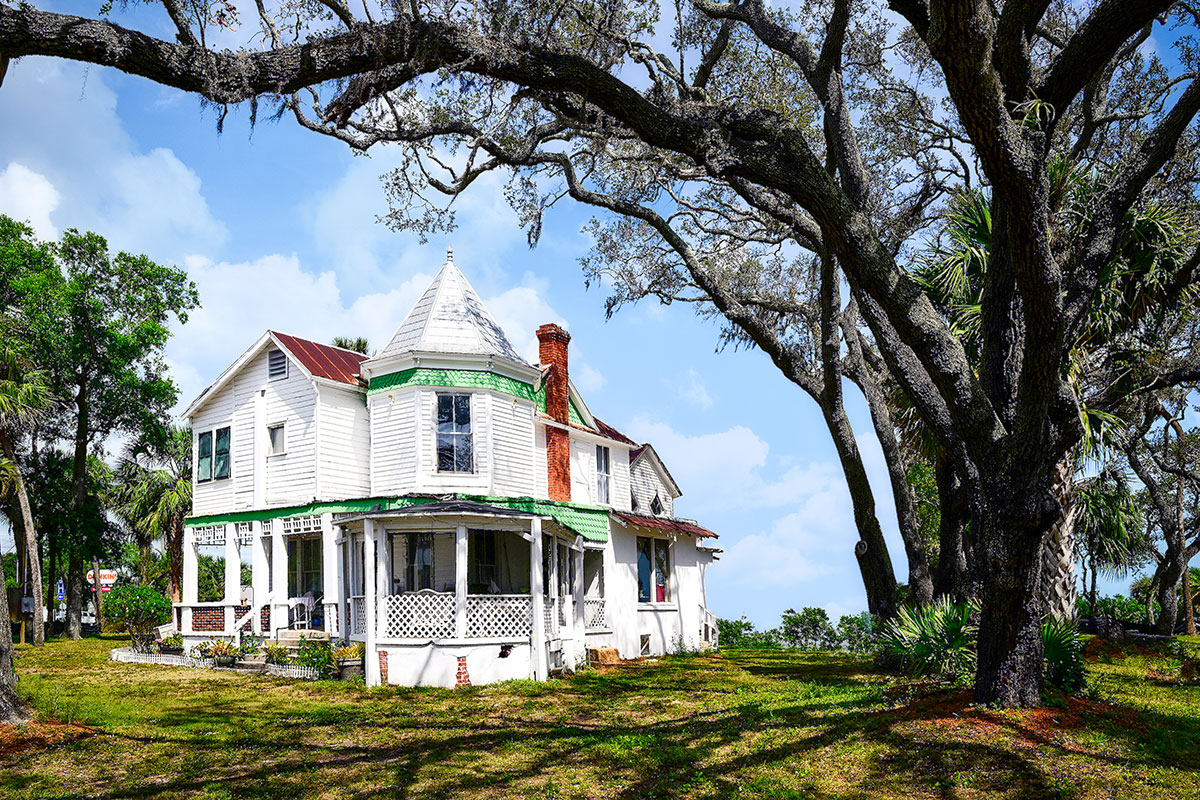
Historical Green Gables, saved from demolition by the efforts of a small band of determined fans, is a living history museum that tells the story of Melbourne’s early days. STEVEN HICKS
Concerted efforts preserving Melbourne home from gentler era
Just steps from where U.S. 1 connects with Hibiscus Boulevard in Melbourne stands an enchantress eager to help her friends forget their hectic todays and return to gentler yesterdays.
Her name is Green Gables, and she has weathered many a storm at the leafy post where she has watched over the Indian River Lagoon for 127 years. The commercial appeal of the acre-plus prime riverfront where she stands almost spelled her doom, but a band of volunteers were so moved by her charms they were willing to undertake the Herculean task of saving her, and they have.
“You walk in and you just fall in love with it,” said Marion Ambrose, president of the all-volunteer nonprofit Green Gables at Historic Riverview Village. “It has a magical quality. You’re enchanted.”
With fundraisers that ranged from Easter egg hunts to motorcycle shows, private donations, and a matching grant from Florida’s Division of Historic Resources, the group of 60 volunteers raised $965,000 to buy the house from the heirs of William and Nora Wells. The generous couple who, after building the house, gifted the then-fledgling city of Melbourne its first school, auditorium and library, plus the land for Wells Park and several roadways.
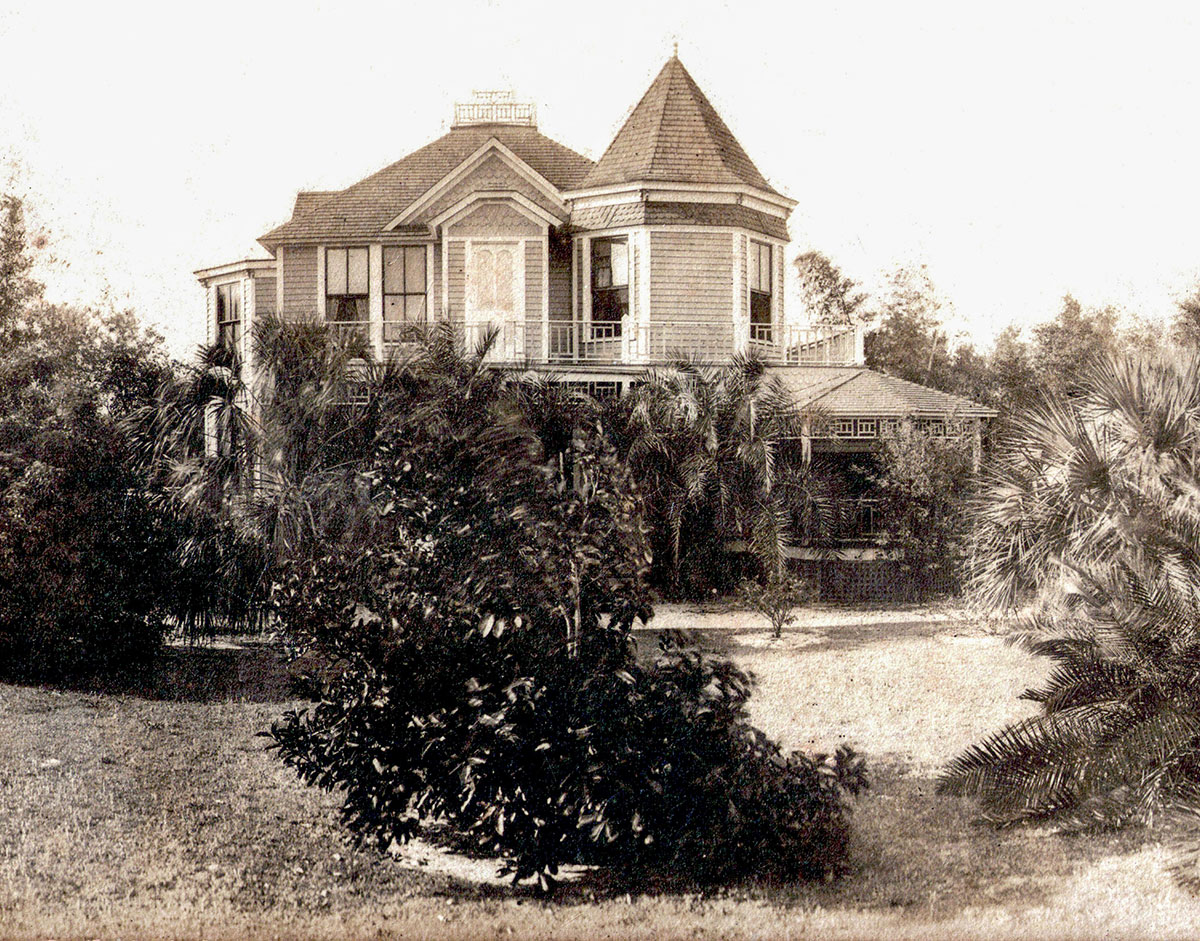
Like many homeowners, the Wells family kept tinkering with their home’s look. By 1906, Green Gables had acquired its distinctive turret. GREEN GABLES AT HISTORIC RIVERVIEW VILLAGE
FRIENDLY TINY TOWN
At the time when the couple built their 2,000-square-foot vacation house in 1896, the city had been incorporated for a mere eight years. There was no U.S. 1, and the population hovered in the hundreds.
William Wells, a metallurgical engineer, had struck it rich with a patent for rustless iron. Nora Wells, the niece of industrialist and politician Leland Stanford, had her own money. They had checked Tampa, Winter Park and St. Augustine as possible sites for their vacation home, but preferred the friendly, tiny town by the shores of a then-crystal-clear Indian River overflowing with fish.
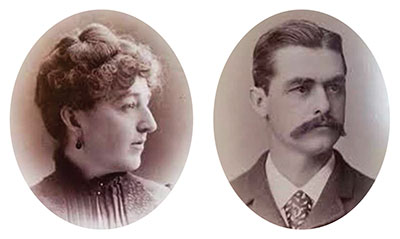
Nora and William Wells built Green Gables as their vacation home in 1896. GREEN GABLES AT HISTORIC RIVERVIEW VILLAGE
The property once encompassed 150 acres that included the site of Melbourne Auditorium, the Fee Avenue Library and Wells Park. Although the couple was initially one of the first of Melbourne’s snowbirds, they later retired full time to the area.
Unlike many historical homes, Green Gables remained in the Wells family until back-to-back hurricanes in 2004 severely compromised the structure. Demolition orders had been issued when an unlikely champion came to the rescue: developer Coy Clark, owner of the neighboring Reflections office building.
“The house would be gone if it weren’t for Coy Clark,” historical preservationist John Daly said.
Clark helped persuade the heirs to forgo demolition and wait until funds could be raised. The family also made an in-kind donation of $260,725 to help with the purchase.
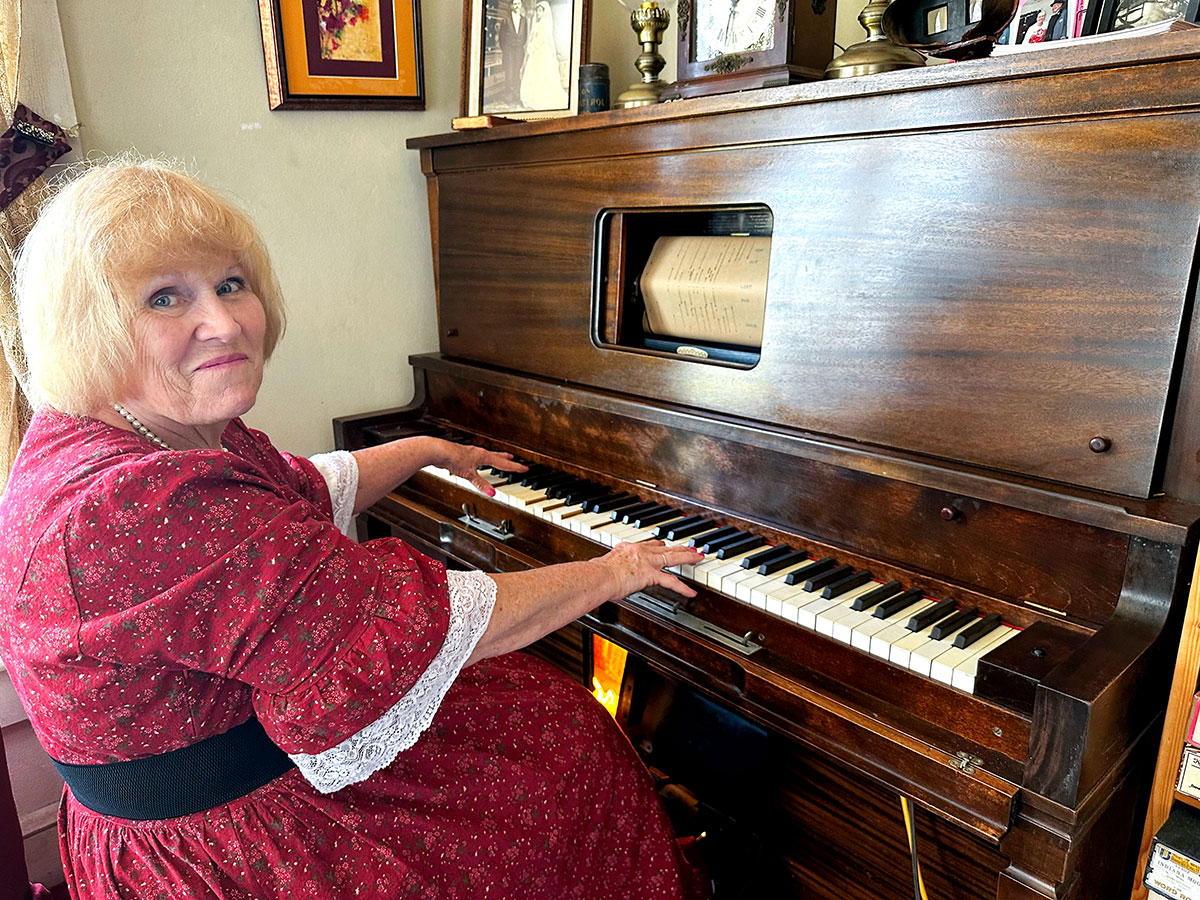
Marion Ambrose, president of the nonprofit, all-volunteer Green Gables at Historic Riverview Village, encourages visitors to try the player piano. MARIA SONNENBERG
JUST THE BEGINNING
Closing on Green Gables, expected within weeks, will mark its official rebirth, but only the beginning of the restoration efforts and many more fundraisers.
“We are baking our way to restoration,” Ambrose said jokingly.
Carole Pope, who spearheaded the restoration of Rockledge’s Lawndale, another historical home, knows all too well the work that lies ahead for Green Gables. Lawndale is owned by the county, so saving the property did not have to include purchase and restoration costs.
“The Lawndale restoration project was difficult, but not as difficult as Green Gables,” Pope said.
“The majority of our work was to paint and patch every surface in the house, yet it was still 20 years before we opened to the public for tours on a regular basis.”
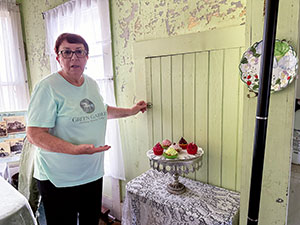
Green Gables volunteer Sue Fallon explains one of the home’s quirky storage areas. MARIA SONNENBERG
Green Gables volunteer Sue Fallon estimates that a decade, a million dollars and a lot of community support will be part of the formula for restoration.
“It’s in need of a lot, but we have a lot of people waiting to help,” she said.
As for opening the house to the public, well, Green Gables is already open, displaying her age as a badge of honor to the individuals and groups that tour it.
“I really admire Green Gables at Historic Riverview Village for opening the house as is,” Pope said. “They have been an inspiration to us and are a really active and determined group.”
Although the house was never extravagant, Green Gables was the first house in Melbourne to incorporate indoor plumbing and electrical wiring from the start.
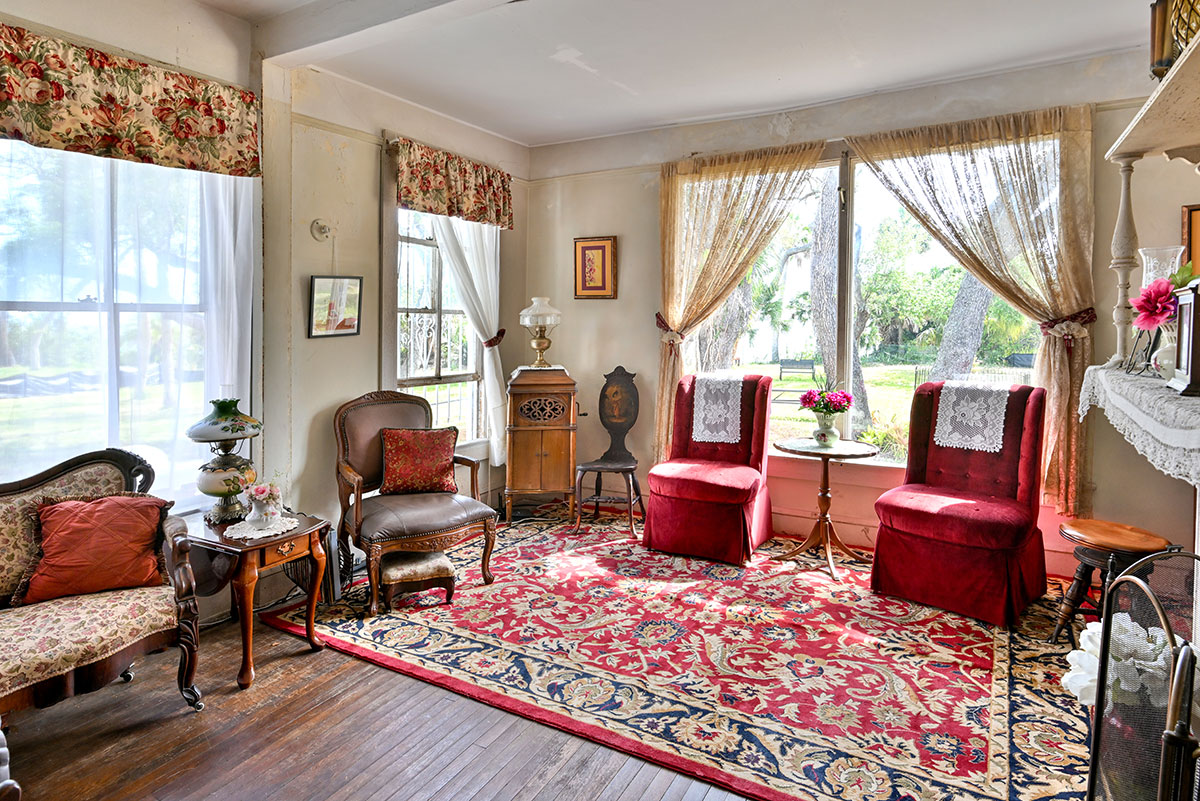
The parlor always enjoys the breezes from the Indian River. Original furniture donated by Wells family heirs will replace some of the pieces currently on exhibit once the restoration is complete. The expansive parlor windows provide not only steady breezes, but also beautiful views of the river and its shoreline. STEVEN HICKS
MIXTURE OF MANY STYLES
Originally a four-square style, it evolved into a Queen Anne through renovations in 1901, 1902 and 1910.
“It’s a fascinating conglomerate of styles,” Daly said.
The interior retains original fireplaces and the unique wooden fretwork the Wells brought from India. It was known as the Wells House until the green gables that encircle it earned it the current nickname.
As a living history museum, Green Gables invites visitors young and old to sit on the furniture, play the player piano and view the pictures in the stereoscope.
“People feel they are visiting relatives,” Ambrose said.
For years, Keith and Renee Kowalske would drive by Green Gables without stopping, yet there was always something about the place that touched them.
“When I heard they were trying to save it, I wanted to help,” Renee said. “We just love everything about it. I can’t wait until my grandkids are old enough so I can share this home with them.”
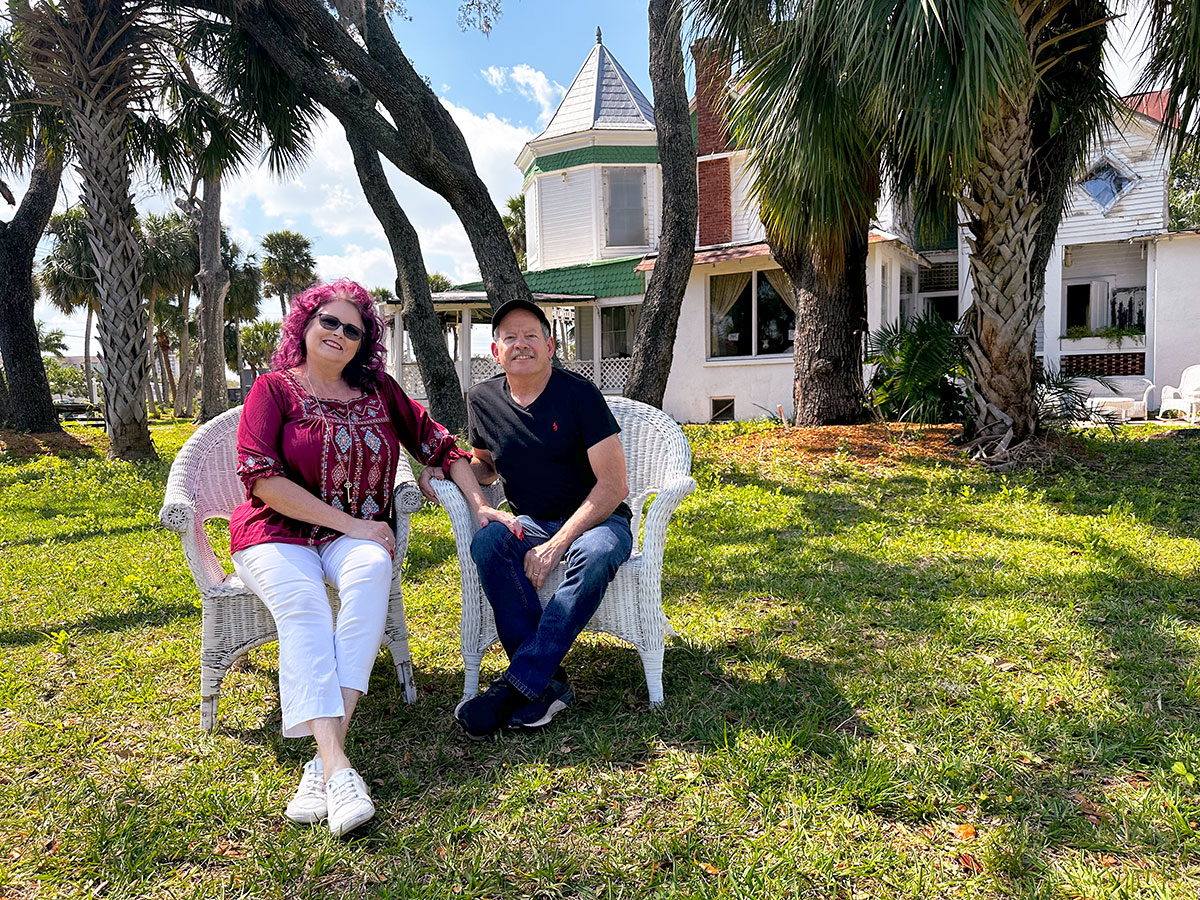
Renee and Keith Kowalske immediately fell for the charms of the old lady. They visit her often and help decorate her for holidays and special events. MARIA SONNENBERG
Award-winning documentary filmmaker Jennifer East also fell for Green Gables’ charms and decided to help the best way she could, by making a documentary.
“The project was initially filmed by a small volunteer crew, in three days, with a zero-budget,” she said.
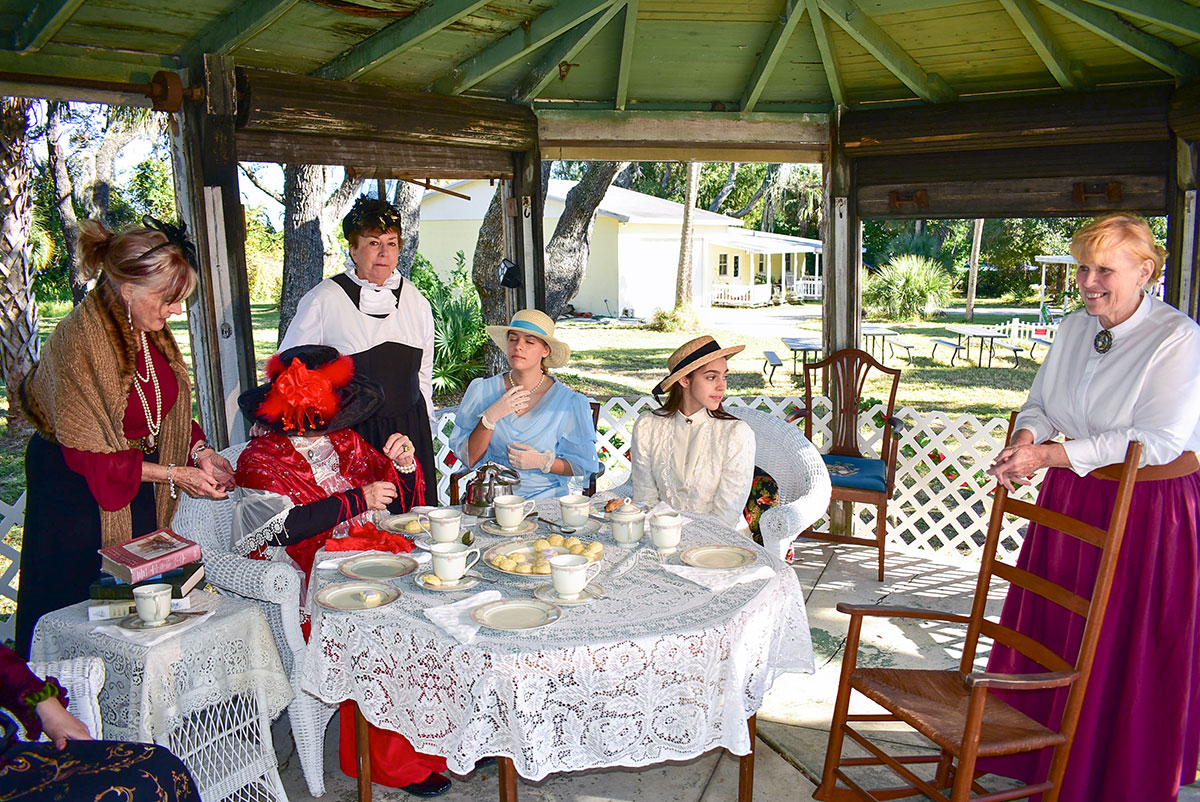
Afternoon teas at Green Gables transport guests to the turn of the century and add funds to help with restoration efforts. The elegant events feature homemade scones and specialty teas. GREEN GABLES
FILM RAISES FUNDS
The documentary, Forgotten Enchantress, was released early in 2020 at live showings and later online and on crowd-funding sites all through COVID, with 100 percent of funds raised going to save Green Gables.
The film, which raised awareness as well as cash, has garnered awards that include the Gold Award for the Best Feature Documentary at the Milan Film Festival and the Best Documentary Feature award at the New York Neorealism Film Awards. The documentary can be viewed online at greengables.org.
Although she lives in Orlando, East considers Green Gables her happy place and visits monthly.
“I would be there every weekend if I could,” she said. “It has a really good energy.”
Supporters of the project are certain more folks in the community would join them in supporting the restoration if they met the old enchantress.
“The entire community should get behind them to complete the restoration of this significant historical treasure,” Pope said.
The Space Coast’s building boom sealed the fate for many historical properties. Green Gables remains, a fragile thread of connection to the area’s history.
“There were only a handful of houses from before 1900 in Melbourne,” said Daly.
“Green Gables is the house now.”
Interested in helping?

Visitors are encouraged to try the stereoscope with its vintage images. MARIA SONNENBERG
Green Gables at Historic Riverview Village welcomes tax-deductible donations, volunteers and in-kind gifts to help a house with a story to tell.
The house is open to groups during the week and to the general public on selected Saturdays.
Visit greengables.org for more information.

Maria Sonnenberg
Maria is a prolific writer and proofer for Space Coast Living and an adjunct professor at Florida Institute of Technology’s Nathan M. Bisk College of Business. When not writing, teaching or traveling, she can be found waging a one-woman war against her lawn and futilely attempting to maintain order among the chaos of a pack of extremely clueless wirehair dachshunds and an angst-driven basset hound.




